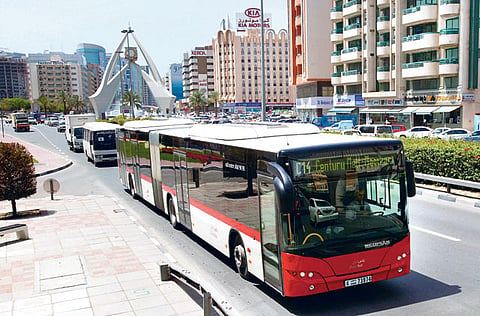How RTA kept Dubai moving for 10 years
RTA’s mega projects like Dubai Metro, highways and Creek crossings have changed the way Dubai moves

Dubai; With more than 50 per cent expansion of the road network, an almost threefold increase in the bus fleet and a hugely popular mass transit system, the Roads and Transport Authority (RTA) has played an exceptional role in the way Dubai moves over the last decade.
As RTA celebrates its 10th anniversary today (Sunday) with a wide array of activities and mega prizes for commuters, we look at its major achievements that have transformed Dubai’s infrastructure and mobility sector into the best in the region.
There is no doubt, one of Dubai’s biggest milestones is getting the Dubai Metro rolling. From planning and executing the mega project in record time to managing the huge mobility shift that the metro triggered with the highest safety standards, RTA has become synonymous with Dubai Metro.
Since its opening on September 9, 2009 till the end of September 2015, the Dubai Metro has lifted more than 656 million riders and the number grows every passing day.
Astonishingly, the metro has the capacity to carry more than two times its current daily ridership of around 500,000.
With a 75km network across two lines, the world’s longest driverless metro is operated by an integrated electronic system enabling the control of accurate trip timing, reducing the time intervals between services, if needed, in a way enabling the operation of the service at a capacity accommodating up to 26,000 riders per hour per direction.
Like most big projects, the Dubai Metro attracted special attention from His Highness Shaikh Mohammad Bin Rashid Al Maktoum, Vice-President and Prime Minister of the UAE and Ruler of Dubai.
“The Dubai Metro project was privileged by the close attention and follow-up of Shaikh Mohammad who laid the foundation of the project on March 21, 2006, and on January 1, 2007 he launched the burrowing of the mega tunnel from Union station to Burjuman station,” Mattar Al Tayer, director- general and chairman of the Board of Executive Directors of the RTA, said.
Al Tayer thanked Shaikh Mohammad, Shaikh Hamdan Bin Mohammad Bin Rashid Al Maktoum, Dubai Crown Prince and Chairman of the Executive Council, and Shaikh Maktoum Bin Mohammad Bin Rashid Al Maktoum, Deputy Ruler of Dubai, for their continuous support to the RTA.
The metro’s trial run began in September 2008, with Shaikh Mohammad taking a trip on the Red Line and one year later he launched the formal operation of the metro on September 9, 2009. Two years later on the same day, the Green Line of Dubai Metro was opened, bringing mass transit to the heart of the congested central business district of Dubai.
Apart from providing an affordable and quick commute to thousands of people daily, the metro also managed to convert a large number of car users to opt for the mass transit system, helping reduce traffic significantly.
Besides the metro, several of RTA’s measures have helped streamline traffic in the city, which has seen car ownership double from 740,000 registered vehicles in 2006 to 1,526,667 vehicles now.
Expectedly, the growth in cars has resulted in a relative increase in traffic over the years. But continuous upgrade of roads from 8,715 lane-kilometres in 2006 to 13,335 lane-kilometres by the end of last month, saw an increase of 53 per cent of high-quality highways and internal streets. This ensured that Dubai’s infrastructure kept pace with increasing road traffic.
Among the major road projects was I the expansion of crossings across Dubai Creek, a key location that straddles the two main parts of Dubai.
“It goes without saying that the planning, designing, and construction of major roads and transport projects take a long time before they can finally pay dividends after operation. However, during this short period, the RTA managed to achieve several mega achievements as the number of lanes crossing the Dubai Creek soared from 19 lanes in 2006 to 48 lanes in 2015, reflecting a 153 per cent rise,” Al Tayer said.
Two new crossings were constructed in the last few years, the 13-lane Business Bay Crossing with a capacity of about 26,000 vehicles per hour and the reconstructed 14-lane Al Garhoud Bridge, with a capacity of 32,000 vehicles per hour. The six-lane Floating Bridge along with widened Al Maktoum Bridge also serve as key crossings over the Creek.
Continuing with its agenda of offering attractive mass transit means as a viable solution to growing traffic concerns, RTA inaugurated Dubai Tram in November 2014, providing an advanced transit system to high-density areas of Jumeirah Beach Residence, Dubai Marina, and Al Sufouh.
Dubai’s bus network has also grown significantly over the last ten years, covering around 80 per cent of the emirate through 1,512 buses.
RTA spent Dh75 billion on infrastructure projects over the last ten years and the ease in traffic movement has saved Dubai’s economy Dh5.9 billion in terms of time wasted in traffic congestion.
Sign up for the Daily Briefing
Get the latest news and updates straight to your inbox


